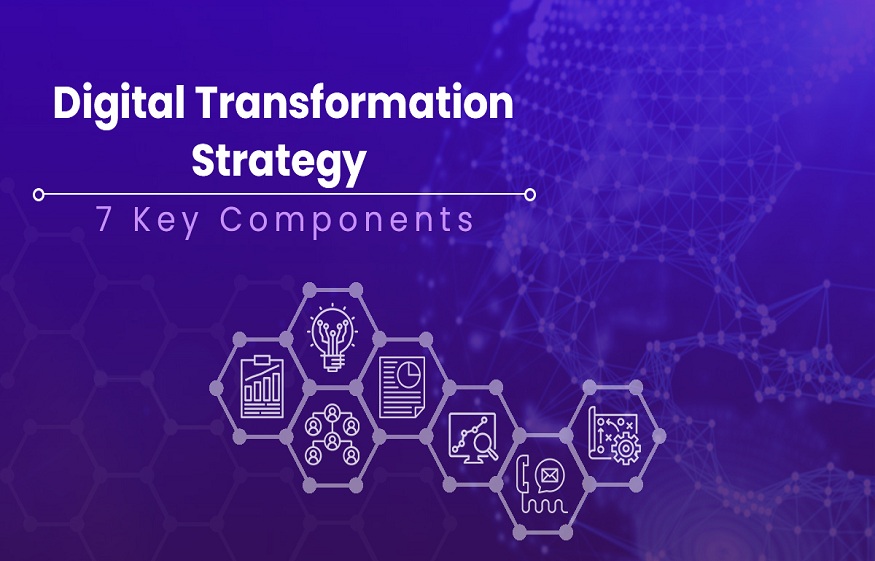In today’s dynamic business world, it has become almost eminent for you to remodel your company in something more technically-advanced. And for that, going through a thorough and proper digital transformation is required. However, this is something you cannot do in a single day. It will take time, knowledge, and the curation of a positive strategy.
In this article, we are going to talk about the latter and tell you how you can get started and implement it. So, without any further ado, let’s begin our work.
What is Digital Transformation?
As per Gartner, the term ‘digital transformation’ can refer to anything from a subtle digital optimization to IT modernization. In some cases, it might relate to the invention of a brand new technology-focused digital model as well.
Usually, the principle of digital transformation can include –
Customer Focus:
Customer focus is crucial in any digital transformation strategy. Organizations should identify the customer’s needs and expectations and use digital technologies to deliver better customer experiences. It might also help a company offer personalized things altogether.
Data-Driven Decision Making:
Digital transformation involves using data to make informed decisions. Organizations should invest in data analytics tools and procedures to gather insights and make decisions based on the information that you have received.
Agile Methodology:
Agile methodology generally involves iterative development and continuous feedback. Organizations should adopt agile practices to quickly adapt to changing market conditions and customer needs. It can also help them provide better services without any issue at all.
Collaborative Culture:
Collaboration is highly critical for digital transformation. Organizations should foster a collaborative culture that encourages teamwork, knowledge sharing, and cross-functional collaboration. This can be done through various apps, like the Google Sheets or MS Office.
Technology Adoption:
Digital transformation requires the adoption of new technologies such as cloud computing, artificial intelligence, and the Internet of Things (IoT). Organizations should identify the technologies that can help them achieve their goals and invest in them.
Change Management:
Digital transformation involves significant changes in the organization’s structure, processes, and culture. Organizations should have a robust change management process to manage the transition and ensure that employees are ready for the change.
Continuous Innovation:
Digital transformation is an ongoing procedure, and organizations should continuously innovate to stay ahead of the competition. Organizations should invest in research and development and experiment with new technologies and business models.
What Are the Benefits of Digital Transformation?
Digital transformation, if used correctly, can be quite beneficial for you. And, trust me, the advantages of the same wouldn’t be stuck at improving your proficiency and all.
There’s a lot more to it than that.
Benefit – 1: Improved Customer Experience
Digital technologies have made it easier for organizations to gather data on their customers and understand their preferences, behavior, and needs.
With this information, organizations can provide more personalized and engaging experiences across channels, including websites, mobile apps, social media, and chatbots.
This can help organizations build stronger relationships with customers, increase customer satisfaction, loyalty, and retention, and drive revenue growth.
Benefit – 2: Increased Efficiency
Digital transformation can automate and digitize manual processes, reducing the time and effort required to complete them. This might help organizations become more efficient, productive, and cost-effective. For example, automation can help organizations
- streamline workflows,
- reduce errors, and
- improve the speed of execution
Additionally, digitization can help organizations reduce paper-based processes, minimize manual data entry, and eliminate the need for physical storage, leading to cost savings.
Benefit – 3: Enhanced Agility
Digital transformation can help organizations respond quickly to changing market conditions, customer needs, and emerging trends.
Digital technologies such as cloud computing, artificial intelligence, and the Internet of Things can enable organizations to collect, process, and analyze data in real-time.
This, in turn, can allow you to make better-informed decisions and take immediate action. It’ll help companies to stay competitive and adapt to new opportunities and challenges too.
Benefit – 4: Better Decision-Making
Digital transformation can help organizations gather, process, and analyze data more effectively, leading to better-informed decisions.
By using data analytics tools and processes, organizations can gain insights into their customers, operations, and performance.
This can help organizations identify new opportunities, optimize processes, and develop new strategies. Moreover, digital technologies such as virtual and augmented reality can enable organizations to simulate and test scenarios, allowing them to make better decisions based on evidence.
Benefit – 5: Improved Employee Engagement
Digital transformation can help organizations empower their employees with new tools and technologies, enabling them to work more collaboratively, creatively, and effectively.
For example, digital tools like cloud-based collaboration platforms, project management tools, and virtual communication channels can enable employees to work from anywhere.
You might also be able to collaborate with colleagues across different locations. It can lead to increased job satisfaction, motivation, and productivity.
Bonus – New Business Models
Digital transformation can help organizations create new business models and revenue streams, and expand into new markets. Digital technologies such as –
- blockchain,
- artificial intelligence, and
- machine learning
…can enable organizations to develop new products and services, reduce expenses, and improve customer experiences.
Digital technologies may also enable organizations to leverage data to create new business models, like subscription-based models, pay-per-use models, and outcome-based models.
The Final Say
So, that will be all for this article. If there’s something else you want to know about, make sure to comment below. We’ll try to help you out as much as we can.

